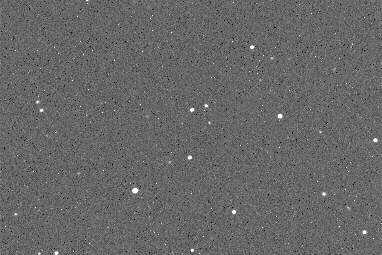

Just some different stuff I have found interesting. Sorry no two headed cows here.
Every now an then, really quite often, an exposure picks up an odd event. Perhaps a satellite
or space junk or meteor or ???????






The brightest objects in the universe, quasars shine with the intensity of up to 1000 large galaxies but from a region that’s only about the size of our solar system. Quasars, short for quasi-stellar radio sources, were discovered in the early 1960s by astronomers perplexed at why these points of light, which looked just like normal stars, were emitting radio waves. When Maarten Schmidt realized that the odd spectrum of a quasar was caused by its light being highly redshifted, he used Hubble’s Law to deduce the vast distances to these objects. For years astronomers debated what could produce so much energy in such a small volume. Now most are convinced that quasars lie in the centers of young galaxies, where supermassive black holes suck in passing stars and gas clouds. This material then forms an accretion disk around the black hole that gets heated by friction until it glows brightly.

Here is an excellent webpage on the subject:


Here is a picture I took the night of April 17, 1998 when I was doing Supernova search imaging with my LX200/ST7. I was shooting NGC 2876 and IC 2471, two galaxies in Hydra. Like I usually do I compare my raw image to the same field of view from The Sky software on my other computer and make sure I have a decent shot, before going on to the next object. I am also looking for candidates for supernovae. If I have any I come back the next day and compare the image to the POSS plates off the internet. Anyway, when I compared this image to the chart, I noticed that one of the stars was extremely bright compared to what it was shown as on the Sky.
The Sky said this star, GSC 4893:1013 was magnitude 14.4, which would make it very faint. But it was the second brightest star in the field, much brighter than the two nearby stars, which were magnitude 11.8 on the chart. Thinking I may have an asteroid I came back to the spot 30 minutes later and took another image. No movement! So, probably not an asteroid. I checked with the Minor Planets Checker the next morning and it confirmed there were no known asteroids anywhere near NGC 2876 at the time of my image. So next I pulled out my Uranometria sky chart...
...and sure enough the star in question was marked "RZ" indicating it was a variable star. I looked in Burnham's Celestial Handbook and discovered that RZ Hya was a long period variable star, probably a red giant with an M4e spectrum and a period of 334 days. This means it only brightens for a few days every 334 days or about once per year. Usually it is about 12 to 14 magnitude, very dim indeed.
Next I downloaded the POSS plate for this area of Hydra from the Digitized Sky Survey ...
...and noticed that indeed the star was quite dim when this image had been taken.
Being curious about whether I had indeed caught RZ Hya at maximum I surfed over to American Association of Variable Star Observers home page and tried to find a light curve on RZ Hya. Alas, none was to be found. It appears not too many people are looking at RZ Hya right now. So I left them an email advising what I had seen. Using the other stars in the field as a reference I estimate the current magnitude of RZ Hya to be about 8.8. Burnham's says it only gets up to mag 9.2. Close enough. I imagine it is at maximum.
Having my interest stimulated like this in variable stars, I decided to order David Levy's new book, "Variable Star Observing for Beginners" from Amazon.com.
While all my astro friends are on their way to the Texas Star Party, I have to work. But I can squeeze in
some fun and new discoveries in those brief moments when the sky clears and I find myself at home. I will have
to check in on RZ Hya again soon and see what it does. You can too if you want. It is located at
RA 09h24m45.3s DEC -06d47'20" right next to IC 2471 and NGC 2876 in the kink of Hydra's tail.
Click here for a finder chart.
